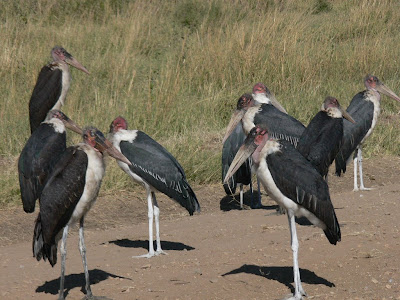Evidently, this rite has been performed by a single family in Harar -- it's a hereditary position.
Reznor of Meignorant, who reports on this phenomenon, says that he did see wild hyenas prowling the city streets at night. Their nocturnal presence most likely provided the immediate impetus for this tradition.

I can just imagine some city council sometime long ago, or a meeting of the village elders, getting together to discuss what to do with the wild hyenas. Probably a variety of proposals were put on the table, ranging from killing them to scaring them off to packing up and leaving the city to the beasts. But then one man stands up and says that instead, they should make peace. And he would begin by approaching one of the hyenas with a chunk of raw meat in his mouth and attempt to feed it.
Thus were the wild hyenas of Harar pacified. (Though I fail to see the cause-and-effect here: man approaches wild carnivore with raw meet in his mouth should lead to man being eaten, right?)
Regardless, I would like to shake that man's hand (if I could time travel).
The man above and below is no doubt a descendant of that original hyena-feeding progenitor. The family business is still up and running. I assume that it's difficult to secure worker's compensation insurance, though.

Here is Reznor himself. He offered his own peace-offering, and his face was not ripped off.
Thanks for the article, Ida.














































